FLIR has a relatively new pocket-sized infrared camera with all of the bells and whistles of the much larger and expensive E6. It boasts the same resolution as the E6 but it’s a fraction of the price at only $769 on Amazon. With these features and benefits, this camera ought to put the E6 out to pasture.
THE GOOD
This camera is about the size of a mobile phone, so you can easily slip it into your pocket. It’s not heavy and it comes with a heavy-duty rubberized covering, so it feels like you should be able to drop this thing and mistreat it however you want, and it should still work fine. It also comes with a USB-C port, which is great.
The menu options are the same as those found on the E6. You can display infrared images, photos, or a blend of infrared images and high-contrast outlines, to help make infrared images “pop”. That’s called their MSX feature, and it has been a game-changer since 2014 (or so).
I could go on about a bunch of other details, but this isn’t some kind of paid post where I’m trying to sell you their product. What I really care about most is the quality of the infrared images, so let’s jump right into that.
WHY MSX MUST BE IGNORED FOR QUALITY COMPARISONS
To the untrained eye, any two images from a good and bad camera will look very similar when using MSX technology. In fact, a bad camera with MSX will actually look better than a good camera without. Check out the two images below. The image on the right looks way better, doesn’t it?
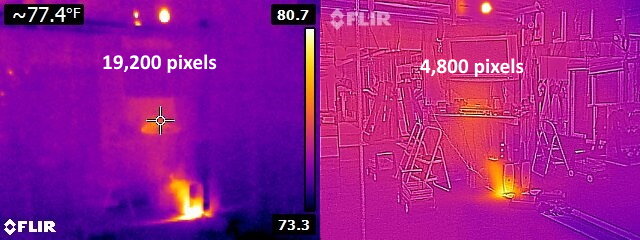
But remove the MSX feature from the image on the right, and the image looks terrible.
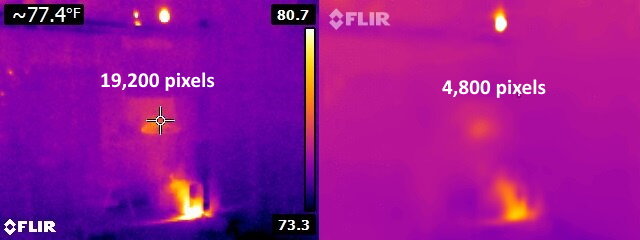
Remember, these images are displaying the same amount of infrared information as the first pair of images. As a home inspector, all I care about is the infrared image. That’s what alerts me to thermal anomolies which might indicate a problem with a home. The MSX is nice for my clients to understand what they’re looking at, but it does not help me identify defects. So to do any fair comparison between infrared cameras, I need to turn MSX off. That’s what I did for my comparison images between the C5 and C6.
C5 VS. E6 IMAGE COMPARISONS
These images speak for themselves. The E6 is superior, but it’s not a world of difference.
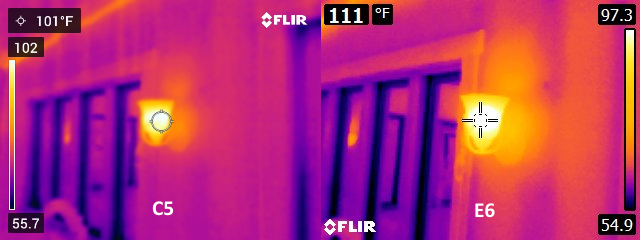
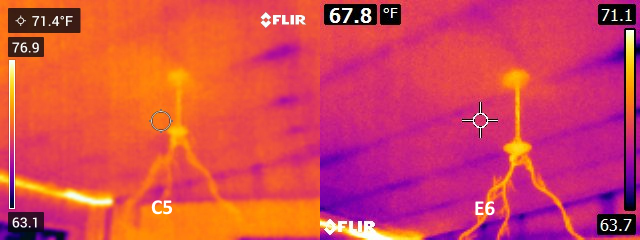
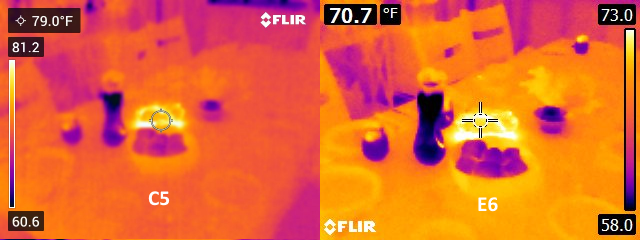
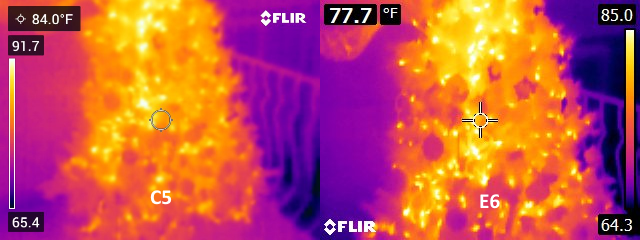
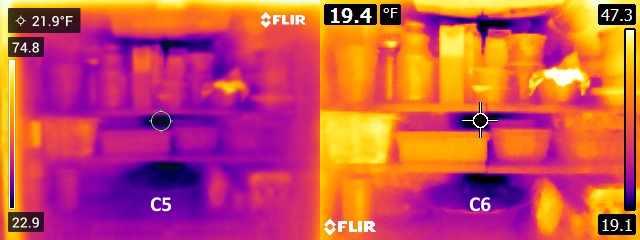
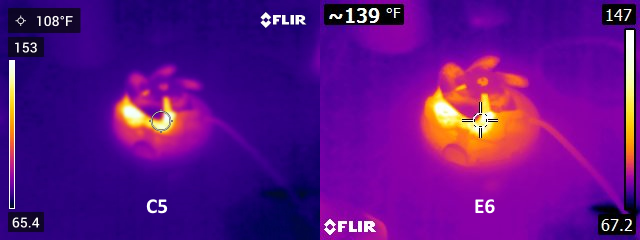
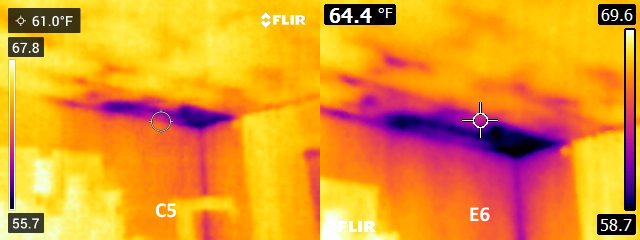

Why do the E6 images look so much better when the two cameras have the same resolution, as well as the same thermal sensitivity rating? I don’t know. The field of view is 9° wider on the C5, but I don’t think this was enough to explain the difference in quality. There has to be some other factor here at play that manufacturers don’t disclose.
CONCLUSION
The FLIR C5 camera is awesome. It’s probably the best camera you’ll find for under $1,000, and the image quality is sufficient for a home inspector. The C5 isn’t as good as the E6, but with prices holding at $1,999, it’s getting tough to justify the cost of the E6. The C5 is surely a better value for home inspectors, and the size sure is sweet.
Edit 12/16/20: The fine folks at Monroe Infrared were kind enough to notify me that I don’t have my facts straight. The E6 is no longer available, so ignore the price I quoted. The E6 has been replaced with the E6xt, which has a resolution of 240×180. The new equivalent of the E6 is the E5xt, which sells for $1,399. However, even with that new information, I still say the C5 is a better deal.

